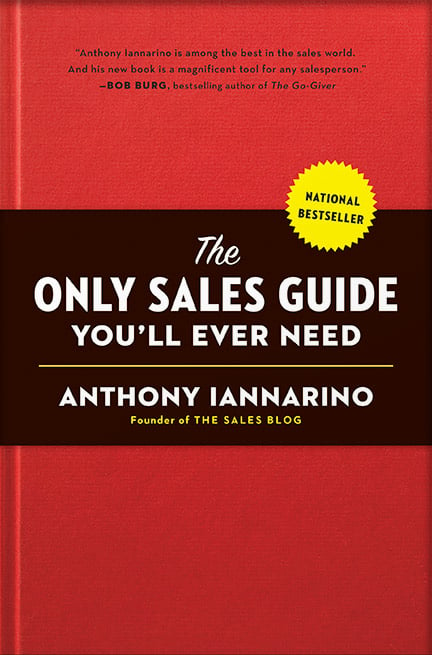The Gist
- The legacy laggard approach to sales views the product as the main source of value for prospective clients.
- The legacy solution approach to sales finds value in the solution the salesperson provides.
- The modern approach utilizes the salesperson’s insights, advice, and recommendations to create value in conversations.
Although salespeople have always tried to create value for their clients, the place where they locate that value has changed a lot over the last seven decades. Like our clients, are approaches are organic, with some salespeople and organizations recognizing and responding to what their clients and prospective clients need from them and others not recognizing what or how much has changed.
Over time, the idea that the value was found in a product or service was replaced by a focus on solutions, in which value lay in allowing a client to solve a particular problem. Even though both of these legacy approaches to sales are still being practiced by some salespeople and sales organizations, the primary locus of value for modern B2B sales is found elsewhere.

From Legacy to Modern Sales Approaches Parts 1-7:
- Part 1 | Approaches
- Part 2 | The Starting Question
- Part 3 | Information
- Part 4 | Discovery
- Part 5 | Stakeholders
- Part 6 | Objections
- Part 7 | Who Leads
Legacy Laggard: The Value is the Product
For a very long time, the product was the value. As noted elsewhere in this series, legacy approaches were developed as a response to the environment and what clients or customers needed at that time. Until the 1980s or so, clients had little access to product information without interacting with a salesperson. The reason salespeople spent time singing the praises of their products, then, was that it was necessary to help the client understand the product’s features, benefits, and advantages.
The salespeople who are saddled with a legacy laggard approach also carry the heavy burden of selling as if their product was the value. That transactional approach is effective when there is little risk of a poor decision causing serious problems for the buyer. But locating value solely in the product is out of sync with what clients and customers want (and need) in the sales conversation. Salespeople with a legacy approach will soon find themselves competing with and losing to a search engine.


Legacy Solution: The Value is the Solution
Recognizing the importance of solving problems was a giant step in the evolution of professional selling. In fact, the move from product to solution is similar in scope to the move from solution to modern insight. Instead of trying to create a need by extolling the virtues of your product or service, the legacy solution salesperson would rely on the value of some combination of their products or services, describing how they would solve the client’s problem better than the alternatives.
The fact that there are still legacy laggard approaches being taught helps us understand just how long it takes new approaches to replace earlier strategies and tactics. The oldest generation of approaches is still being practiced, despite being eclipsed by two generations of innovations and improvements. Along the same lines, much of what you see and hear today is a legacy solution approach in new packaging.


Modern Approach: The Value is Advice and Recommendations
Every B2B salesperson will say that they are consultative, but if you press them on what that means, you’ll probably hear things like “I ask good questions” and “I don’t use high-pressure sales tactics.” Most of these salespeople have never even witnessed a truly high-pressure sale.
Unfortunately, good questions and a no-pressure approach don’t amount to anything close to a consultative approach to selling. The word consult means “to give professional advice and recommendations.” In the last section, we discussed who leads the sales conversation in different sales approaches: the legacy laggard salesperson follows the client, the legacy solution salesperson tries to negotiate to follow their sales process, and the modern salesperson leads the client. They earn that leadership by giving trustworthy recommendations and advice around how the client should pursue the better results they need, something we can call buyer insights.
When you are truly consultative, your advice and your recommendations create more value than your product, service, or solution. Let me explain. You are teaching your client to make sense of their environment and providing them with an understanding of what they need to do to be successful. You are also offering them advice as to how they should make a certain decision. Because you have helped hundreds of people and companies make similar decisions, you have the experience necessary to know what works and what doesn’t. You can see things your prospective clients can’t see until you illuminate them.
The modern approach has major differences from earlier approaches. First, it recognizes that clients value help making decisions, partly because they require the certainty that legacy methods don’t provide. Second, and equally important, modern salespeople distinguish between the value they personally create and the value of their product or solution. Few legacy practitioners recognize that the value created in the conversations you have with your clients is available to your clients before they buy anything from you, even though it precedes the decision to buy and the concrete value of their better results. In many ways, that makes it even more important than any advantage your product or solution can offer them.
Because legacy salespeople mistakenly believe the value lies in their product or their solution, they think that these things should be the content of the conversation. This mistake makes it impossible for them to be truly consultative, since they explicitly value something other than the decision the client is trying to make—and the advice and recommendations that are necessary to the better results they need.
The more valuable your conversations, the more value you create for your prospective client. But the opposite is also true: a conversation that doesn’t create value around your client’s decisions and results is certain to create “negative value,” something that will prevent you from differentiating yourself and cause you to lose deals you might have won.
Read the next chapter in the series: Part 9 | The Level of Value
Do Good Work
- Remove anything from your conversation that doesn’t create value for your client.
- Eliminate your reliance on your product or your solution to compel change and create a preference to buy from you.
- Focus your conversation on helping your client better understand their world and how they might make the best decision for their future.

Essential Reading!
Get my first book: The Only Sale Guide You'll Ever Need
"The USA Today bestseller by the star sales speaker and author of The Sales Blog that reveals how all salespeople can attain huge sales success through strategies backed by extensive research and experience."
Buy Now










